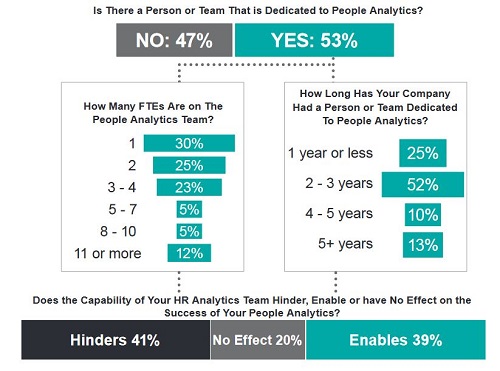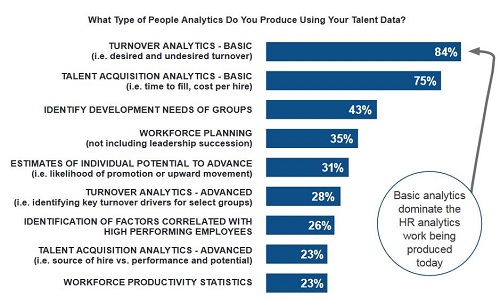As we head full-on into the second month of 2017, a friend sent me the link to a survey analysis that is extremely eye-opening. Still Under Construction: The State of HR Analytics 2016, conducted and published by the New Talent Management Network, has some compelling data about how HR functions are deploying higher level analytics and how successful they are in deriving actionable insights.
I was somewhat surprised at the findings. Maybe you will be, too.
According to the report, the perceived revolution in human resources inspired by the promise of relevance through data-driven insights is largely unrealized. No surprise, right? It’s a quick read, with reader-friendly graphs and charts that should make you feel more normal if your HR analytics investment and programs aren’t moving ahead as quickly as you’d like – or as quickly as you perceive your competitors’ are!
There are three primary findings:
1. “Big Promise; Small Reality”
Essentially, there’s lots of talk and very little action: “…most organizations are using the same tools that existed years ago to produce the same analyses companies have always produced.”
“It turns out that the data is dirty – inconsistent, scattered, unreliable and sometimes just plain inaccurate.”
3. “Lean, Green and Unloved”
Surprisingly, the HR data analytics push doesn’t seem to be helping: “More companies said their people analytics team hinders their analytics work than helps it.”
All three points above are discussed with interesting data points to support the conclusions. Point three is explained with the following:
 The takeaway here is that when there are dedicated people analytics teams in place, they are relatively small, relatively inexperienced, and not being very successful in changing the people practices of the organization. And therefore, confidence in these teams’ output remains low.
The takeaway here is that when there are dedicated people analytics teams in place, they are relatively small, relatively inexperienced, and not being very successful in changing the people practices of the organization. And therefore, confidence in these teams’ output remains low.
Perhaps experience and longevity will help. Or perhaps we’ve gotten the cart before the horse. This paragraph from the report really struck home for me:
Only basic people analytics are being performed by most organizations, undercutting the popular narrative that companies are rapidly advancing in this space. The only rapid advancement seems to be in adding an HR analytics function, not getting deeper, more meaningful insights from it.
This report generates real food for thought. I think you’ll find it interesting.

